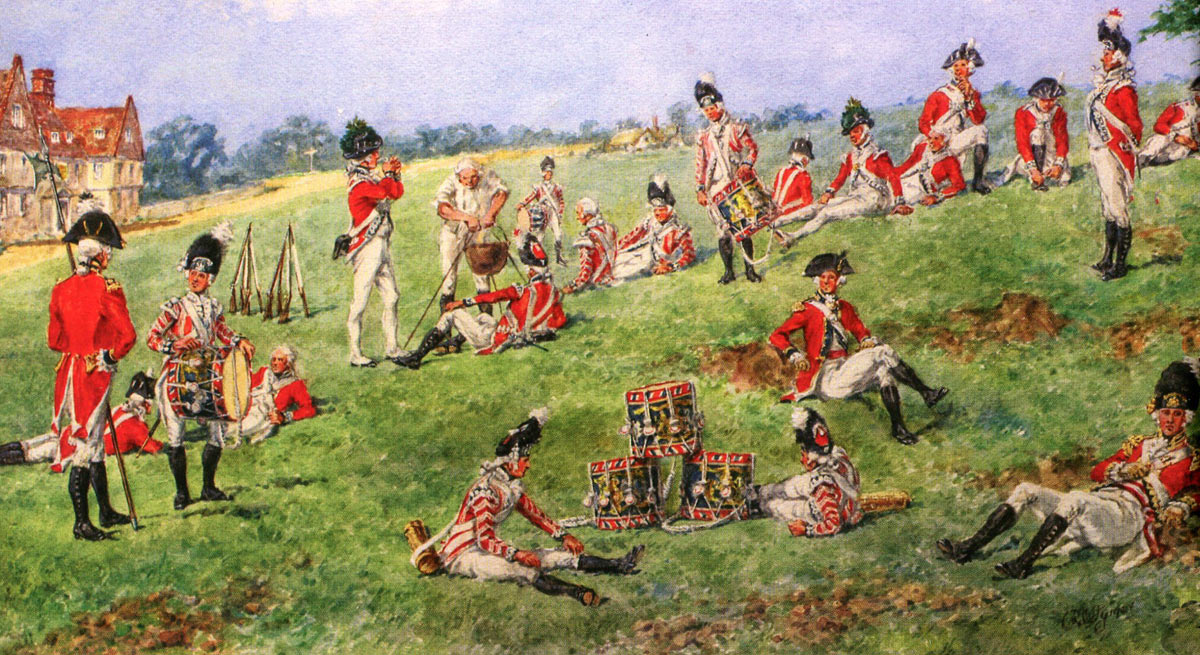The Battle of Brandywine Creek was fought between the American Continental Army of General George Washington and the British Army of General Sir William Howe. It was an early battle in the American Revolutionary War (1775-1783), taking place on September 11, 1777.
Howe Moves His Army
- By the first week of March 1777, Washington became convinced that Howe was going to move his army to Philadelphia.
- But Howe did nothing in March, April, May or early June. He began to move in mid-June. He was hoping to draw Washington out of his fortified position into open battle. Washington did not take the bait.
- In July, Howe’s army began to move, and on July 23, they set to sea. But it was not clear exactly where they were going.
- On July 30, the British fleet was sighted off Delaware Bay. This made it obvious that Howe’s target was Philadelphia.
- On August 25, Howe disembarked a light infantry unit at the mouth of the Elk River, just 30 miles south of Philadelphia. It took Howe a week to offload all of his troops and supplies. Altogether, he has about 15,000 soldiers.
- They moved slowly, reaching the Brandywine River (half the distance to Philadelphia) on September 11. There they met Washington and 10,000 Continental troops. Washington’s army had marched quickly from New Jersey.
Battle of Brandywine Creek: Afterward
- On the way to meet Howe’s army, Washington’s army marched through Philadelphia. There they were joined by the Marquis de Lafayette. Lafayette, a 19-year old French nobleman, offered to serve in the army without pay.
- Washington reached Brandywine Creek on September 9 and spread his army out on high ground behind the river, on either side of the main road that crossed the river.
- On the morning of the 11th, a brigade of Hessians attacked right across the river bridge, while two others, under Howe and Cornwallis, moved northward to cross the river at a couple of fords and got behind the Americans. Washington left his right flank unanchored.
- Washington’s lines held a long time but eventually collapsed. Darkness and exhaustion prevented the British from following up.
- Battle of Brandywine Creek death toll: British lost 89 dead and 400 wounded. Americans lost 200 dead, 40 prisoners and 400 wounded (including Lafayette).
- Howe stopped for two days and did very little. Washington fell back to a new position behind the Schuylkill River, attempting to shield Philadelphia from Howe’s army. He received 3100 reinforcements.
- On the 15th, Washington re-crossed the Schuylkill, wanting to attack again, but a thunderstorm prevented an attack.
- Washington sent Alexander Hamilton to Philadelphia to warn the Congress to evacuate the city. They moved to York, PA.
This article is part of our larger selection of posts about the Revolutionary War. To learn more, click here for our comprehensive guide to Revolutionary War.
This article is part of our larger selection of posts about Colonial America. To learn more, click here for our comprehensive guide to Colonial America.
This article is also part of our larger selection of posts about American History. To learn more, click here for our comprehensive guide to American History.
Cite This Article
"Battle of Brandywine Creek" History on the Net© 2000-2024, Salem Media.
July 27, 2024 <https://www.historyonthenet.com/battle-of-brandywine-creek-summary-facts>
More Citation Information.






